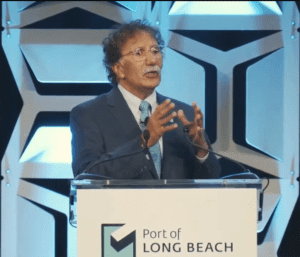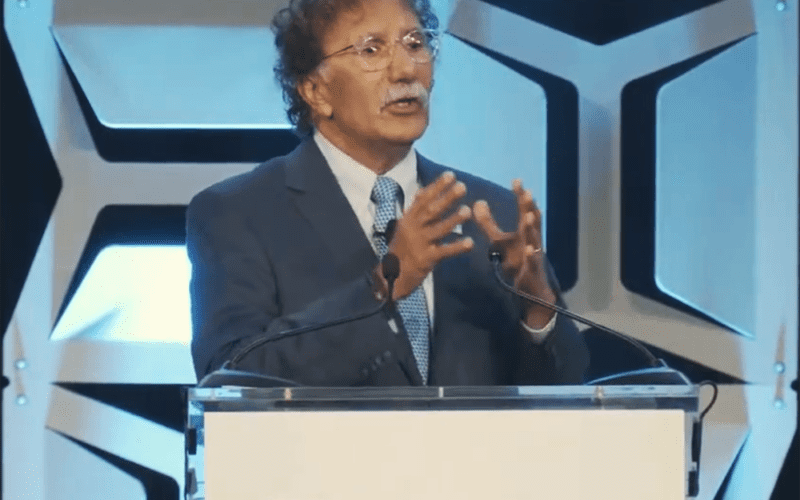
At the Port of Long Beach’s ‘State of the Port’ address, held Jan. 26 at the Long Beach Convention Center, port Executive Director Mario Cordero said that Long Beach is working to become the world’s first zero-emissions seaport.
The event, which was the first in-person State of the Port address since 2020, following two years of virtual events due to the COVID-19 pandemic, attracted more than 700 attendees, port officials told Pacific Maritime.
During his 50-minute speech and video presentation, Cordero committed to supporting state and federal efforts to increase renewable energy sources, and called 2023 the “Year of Imagination.”
Among the planned projects, Cordero said, is a bid to assemble and manufacture offshore wind turbines that will increase the state’s supply of renewable energy and reduce greenhouse gas emissions.
He also called on companies with strong environmental policies to choose the Port of Long Beach when shipping their goods and materials.
The POLB is also establishing a Zero Emissions, Energy Resilient Operations Program – known as ZEERO – to invest in projects aimed at reducing the impacts of operations and improving air quality.
Cordero said that ZEERO’s goals include supporting the development of renewable energy projects, including the port’s proposed Floating Offshore Wind Staging and Integration facility, known as “Pier Wind.”
A conceptual assessment for Pier Wind is scheduled for completion in spring 2023. Cordero said that the facility would aim to become the largest facility specifically designed to accommodate the assembly of offshore wind turbines at any U.S. seaport.
Turbines assembled in Long Beach would be deployed to wind farms off the coast of Central and Northern California. The project would help California meet a goal of producing 25 gigawatts of offshore wind power by 2045, in addition to creating jobs and economic opportunities for communities near the San Pedro Bay port complex.
The Port of Long Beach ended 2022 with 9.13 million twenty-foot equivalent units moved, down 2.7% from 2021, which was the most active year in Long Beach’s 112-year history as a seaport.
The POLB ended 2022 as the third-most trafficked seaport in the country last year, after Los Angeles’ 9.91 million TEUs and the Port of New York-New Jersey, which moved 9.49 million TEUs.

